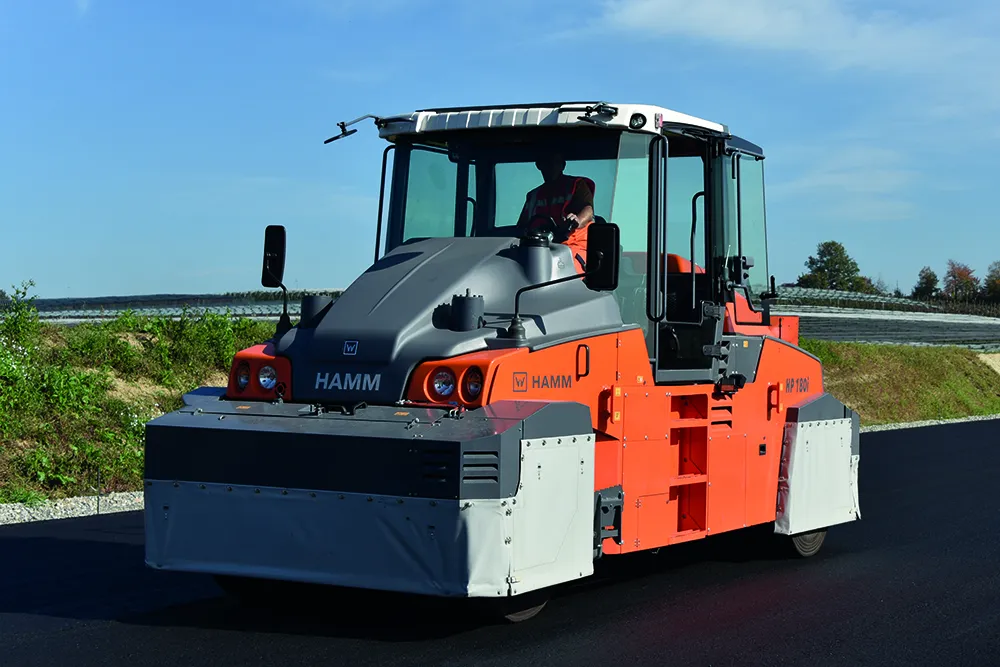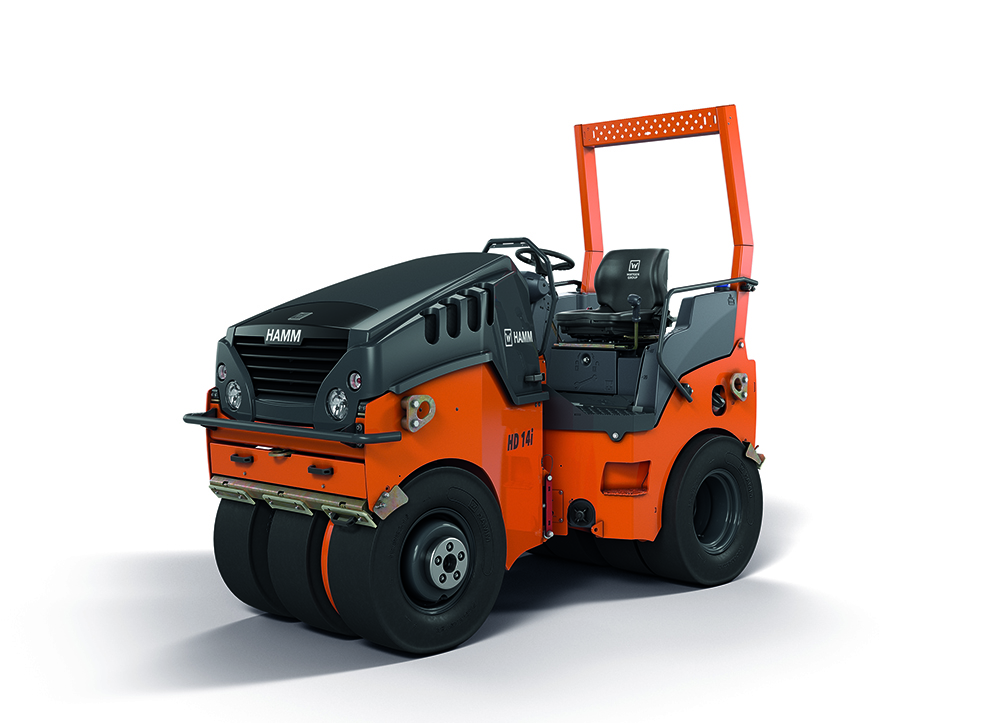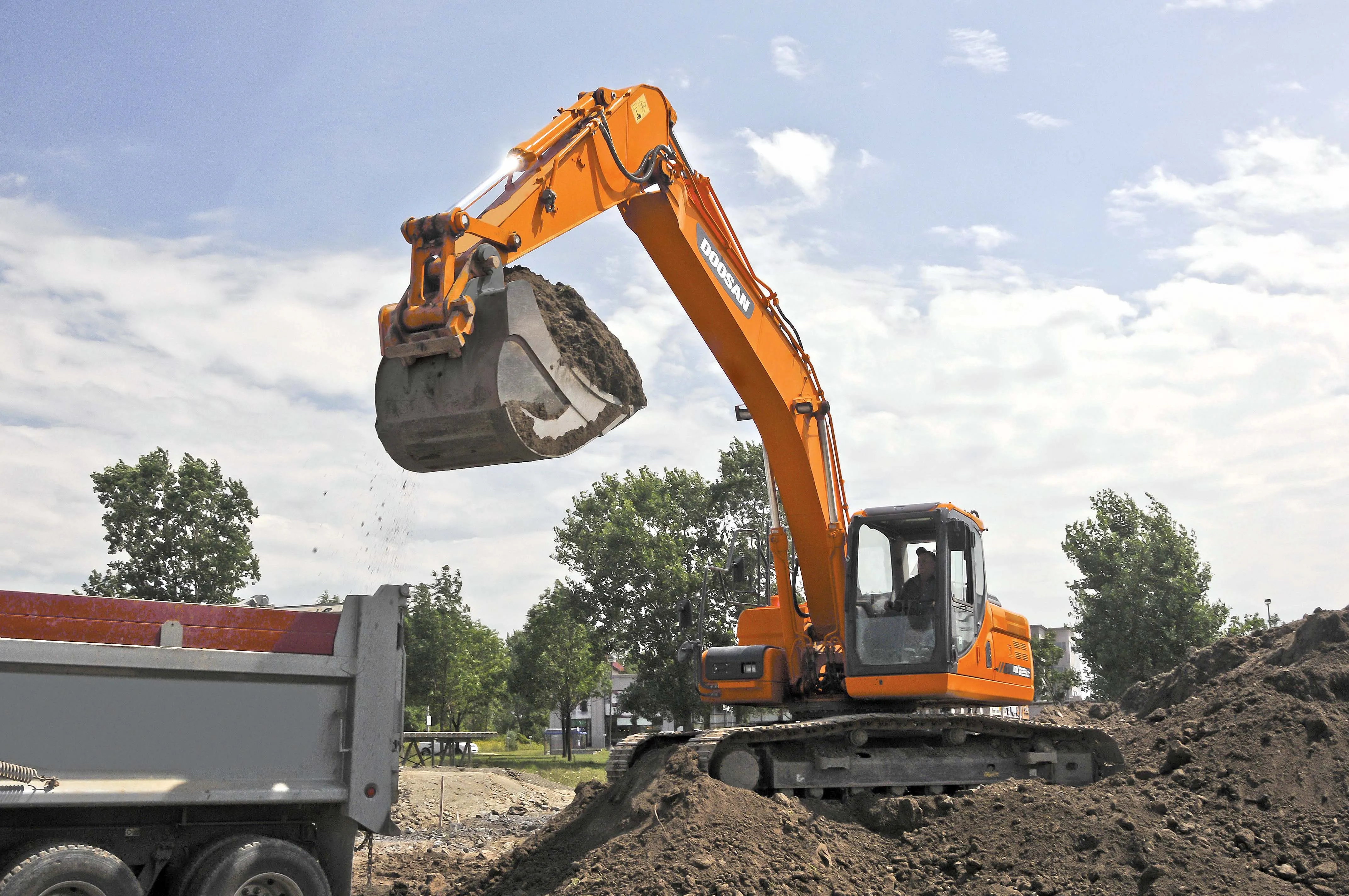
According to HAMM, its HD CompactLine compactors are versatile machines that can be used in a wide range of duties. The models range in weight from 1.5-4.5tonnes. The latest addition is the compact pneumatic-tyre roller, which has undergone a facelift and is now available under the name HD 14i TT. The "i" in the name means that it fulfils the requirements of the exhaust emissions standard EU Stage V/EPA Tier 4.
The reworked pneumatic-tyre roller is the HD 14i TT, with a working weight of around 4tonnes and a working width of 1,276mm. The machine is suitable for repair work and for compacting small paths and surfaces. Its compact dimensions mean that compaction can be carried out in narrow spaces. It has a large side clearance, allowing it to compact to the edge on kerbs and small walls. The Kubota engine has DOC-DPF technology to ensure it meets Stage V/Tier 4 emissions requirements and delivers 37.4kW.
With this upgrade, HAMM has also improved visibility. The roller fulfils the new requirements of the "Field of view standard" DIN
EN 474 and offers greater safety onsite as well as a better view of the surface to be compacted.
Moving up the size scale, the new HP series pneumatic-tyre rollers feature many upgrades from earlier designs. One important upgrade is the large water tank, which offers sufficient capacity for a full working day without refilling, boosting productivity.
For the HP series, the firm uses a uniform platform as the basis for all variants in every market. The HP 180 or HP 180i model offers a minimum working weight of 8tonnes and a maximum operating weight of 18tonnes. The larger HP 280 or HP 280i model offers working weights between 10tonnes and 28tonnes.

The firm offers individual markets with the respective model to suit regional demands with regard to weight classes and equipment versions. The HP 180i and HP 280i models (both with Easy Drive operating concept) comply with the requirements of the Stage V/Tier 4 emissions standards, while the HP 180 and HP 280 models are designed for Tier 3 markets. The HP machines are said to offer good visibility and ease of operation. At a construction site near Ankara, an HP 280 was used during the renovation of a 3.5km long section of a four-lane highway.
The hydrostatic rear-axle drive combines with a sensitive control system to allow the right speed to be set in every working situation. This also enabled the pneumatic-tyre roller to perform well in the hilly environs of Ankara. Meanwhile, the intelligent drive control is said to allow for smooth, even acceleration and braking, which prevents uneven compaction.
A wide range of options allows the pneumatic-tyre rollers to be equipped for each individual market and application. Thermal aprons are available for all models in the HP series. The diesel-powered tyre heating is a new feature for the HP 180i and HP 280i models. The integrated tyre heating is not operated using gas, but with diesel from the fuel tank. This means that the costly transport and time-intensive replacement of gas cylinders is eliminated. This system boosts safety as there are no naked flames and no risk of ignition when it comes into contact with oil or the additives. Another permanent feature of the new tyre heating is an automatic temperature control. The operator preselects a minimum and maximum value and the control maintains the temperature in this range.
When paving special asphalt that is rather difficult to process, sprinkling additives on the tyres is essential for high-quality compaction. By redesigning the additive-sprinkling system, the firm says it offers easy handling and high compaction quality. One advantage is the time-saving filling of the additive concentrate, with no need for premixing. The dosage can be regulated in different levels from the driver's platform. The water and additive are mixed automatically, offering an optimal mixing ratio without demixing. The driver can also monitor the fill level using the display. It is also possible to switch sprinkling from water to additive at any time.









